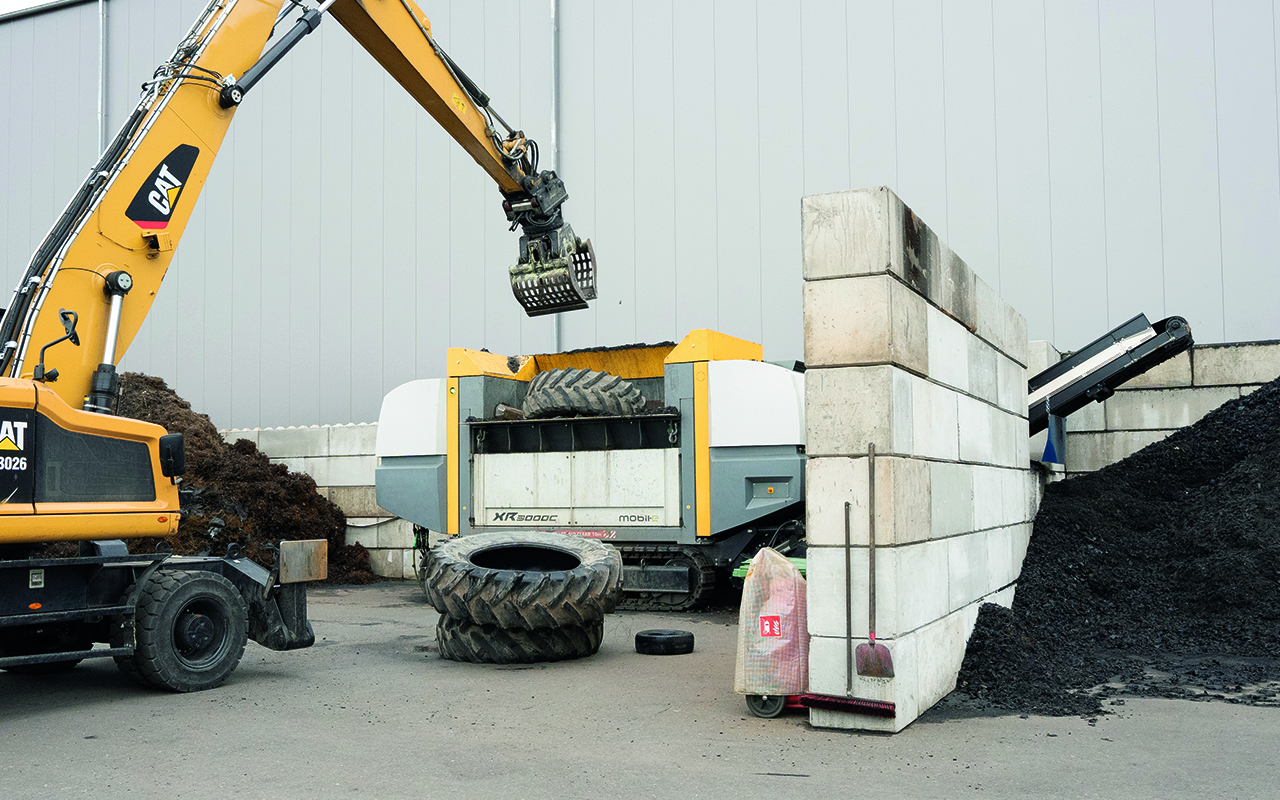
“With the Untha XR3000C mobil-e, we shred scrap tyres in a single-step process. The highly efficient shredding process and the economical Untha Eco Power Drive lower our overheads and help increase our economic viability. Thanks to the XR, we now achieve the output that used to require two shredders with just a single one”, is how Michael Roth, Managing Director of ROTH International GmbH, sums up the advantages offered by the Untha shredder.
Scrap tyres constitute a problem for waste management and recycling. It is estimated that approximately 17 million tonnes of scrap tyres are produced every year, 600,000 tonnes in Germany alone. To recycle tyres and rubber in an environmentally friendly, resource-saving manner, special processes are used: pyrolysis technology, material recycling, and the production of alternative fuels.
Every year, Roth International processes approx. 4,000 tonnes of scrap tyres for pyrolysis technology and the production of alternative fuels, from tiny wheelbarrow wheels to supersize construction machinery wheels. The goal is to make the best possible use of the resources contained in the tyres while working as energy-efficiently and economically as possible.
“Due to their composition (rubber/textile mesh), scrap tyres are difficult to shred. They require a shredding solution with a high torque and an exact cutting gap that produces a highly defined grain. This is important because metal wires that have not been cleanly cut pose a problem for further processing, as they may get caught and cause issues down the line,” says Daniel Wresnik, Team Leader XR/ZR Sales & Demonstrations DACH Region at Untha shredding technology GmbH.
Roth International chose the Untha XR3000C mobil-e: a slow-running, single-phase shredder that does the job that used to require two machines. Thanks to the energy-efficiency of the Untha Eco Power Drive (drive system with water-cooled synchronous motors) and its highly reliable shredding performance, this shredder is particular cost-effective and economical. The C-cutting system (cutter) shreds scrap tyres down to a fraction size of approx. 50 mm in just a single step (according to the fitted screen size). The unit has a throughput of around 4.5 to 7 tonnes per hour, depending on the state of the material and its composition. Using a magnet separator that is installed above the conveyor belt, metal parts are removed from the material and reintroduced into the resource cycle. The shredded tyres are ideal for use in pyrolysis processes or alternative fuel production.





